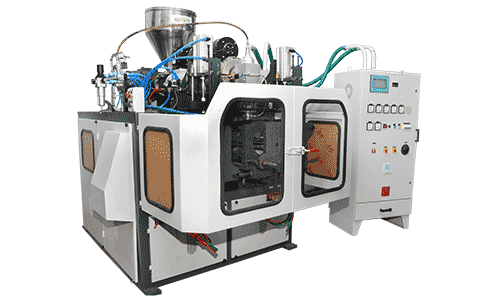Blow Moulding VS Rotomoulding
In the process of hollow plastic form, there are two methods commonly known as blow Moulding and roto Moulding.
Sadhi Machinery Plastic Product has been concentrating on blow Moulding for many years.
Here we explain how Blow Moulding is better than Roto Moulding?
Blow Moulding

Blow Moulding is a process utilized in the manufacturing industry to produce hollow plastic products.
It contains the use of heated, liquid material that is put off into a mould cavity under pressure.
This method is a specific type of moulding process.
Roto Moulding
Rotomoulding is a versatile method for making distinct hollow plastic parts. A single hollow part is made by rotating and heating with two axes.
The raw materials are injected into the rotating Mould.
Centrifugal force pressurizes the molten plastic to stay on the internal wall of the Mould.
Now we are going to compare both Blow Moulding and Rotomoulding respectively
Multi-Layers
The Blow-moulded tank utilizes a fiercely UV-stabilized outer layer, a black middle layer that takes 100% of the recycled flash and trimmings, and a virgin polymer inner layer in contact with potable water.
The layers in blow molding establish at the same time and therefore the bonding between the layers is absolute.
SMP Blow Moulding Machine acquires multi-layers die head technology. obtain the manufacturing of multi-layer products.
Better the recovery utilization rate of material and decrease the material cost.
In the roto moulding method, the material layers add in each Moulding process-weak bonding plus very vapid and decimation of energy, labor, material, and space.
Energy Saving
In the section on energy saving, the blow Moulding Process is totally automatic and utilizes electricity which is secure for labor, keeps the temperature less, and the environment clean.
In this process, there is only need one operator, two workers for scrap cutting, and it is auto material feeding & auto water circulation cooling as well.
On the other side, in roto Moulding, there is more manual work than blow moulding.
For example, in the method of roto Moulding, special workers require to open and close the moulds.
Opening and closing die in part of heavy manual labour. Furthermore, in this process, it uses a fuel that keeps the temperature high and high-risk for labourers and adds materials.
This process is costly and needed many labourers as well.
Cycle Time
In most manufacturing processes, timing is most important. Generally shorter production times are more economical
In the roto Moulding process, the cycle times are often more than 30 minutes on the other hand blow Moulding cycle times are often less than one minute.
Tooling
On the other hand, in the process of Roto Moulding, tooling must replace consistently.
Porosity
In Roto Moulding, a plastic resin is fall down around the inner hot mold to try to fill in all the portions of the mold.
Unluckily, this still outcome in voids in the product.
On the other side, in blow Moulding, a solid parison neglects the voids, outcome in parting line integrity.
Part weight
By their very manufacturing process, roto moulded parts result in large walls that means parts are basically heavier than they otherwise could be.
Blow-moulded components form with thinner walls that means parts are all together as light as they can be while meeting design essentials.
Conclusion
By the Whole above information, you easily identify that the blow Moulding process is the best process than rotomoulding. The blow Moulding products have the benefits of a long lifetime, are wearable, strong, and durable, have good impact resistance, and good low-temperature resistance.
